
Ian Terence Botham,Baron Botham,is an English cricket commentator,member of the House of Lords,a former cricketer who has been chairman of Durham County Cricket Club since 2017 and charity fundraiser.

This is a general glossary of the terminology used in the sport of cricket. Where words in a sentence are also defined elsewhere in this article,they appear in italics. Certain aspects of cricket terminology are explained in more detail in cricket statistics and the naming of fielding positions is explained at fielding (cricket).

In cricket,the boundary is the perimeter of a playing field. It is also the term given to a scoring shot where the ball is hit to,or beyond,that perimeter,which generally earns four or six runs for the batting team.

In cricket,an extra is a run scored by,or awarded to,a batting team which is not credited to any individual batsman. They are the runs scored by methods other than striking the ball with the bat.
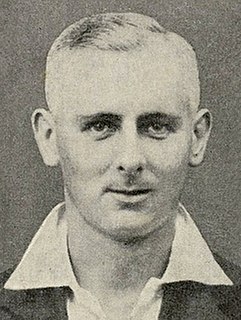
Hedley Verity was a professional cricketer who played for Yorkshire and England between 1930 and 1939. A slow left-arm orthodox bowler,he took 1,956 wickets in first-class cricket at an average of 14.90 and 144 wickets in 40 Tests at an average of 24.37. Named as one of the Wisden Cricketers of the Year in 1932,he is regarded as one of the most effective slow left-arm bowlers to have played cricket. Never someone who spun the ball sharply,he achieved success through the accuracy of his bowling. On pitches which made batting difficult,particularly ones affected by rain,he could be almost impossible to bat against.
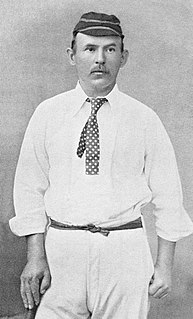
Arthur Shrewsbury was an English cricketer and rugby football administrator. He was widely rated as competing with W. G. Grace for the accolade of best batsman of the 1880s;Grace himself,when asked whom he would most like in his side,replied simply,"Give me Arthur". An opening batsman,Shrewsbury played his cricket for Nottinghamshire County Cricket Club and played 23 Test matches for England,captaining them in 7 games,with a record of won 5,lost 2. He was the last professional to be England captain until Len Hutton was chosen in 1952. He was a Wisden Cricketer of the Year in 1890. He also organised the first British Isles rugby tour to Australasia in 1888.
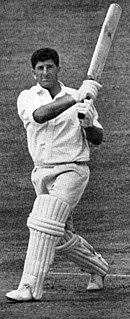
Kenneth Frank Barrington,was an English international cricketer who played for the England cricket team and Surrey County Cricket Club in the 1950s and 1960s. He was a right-handed batsman and occasional leg-spin bowler,known for his jovial good humour and long,defensive innings "batting with bulldog determination and awesome concentration".

William Henry Lockwood was an English Test cricketer,best known as a fast bowler and the unpredictable,occasionally devastating counterpart to the amazingly hard-working Tom Richardson for Surrey in the early County Championship. A capable enough batsman against weaker bowling sides who scored over 10,000 runs in first-class cricket,stronger bowling tended to show flaws in his technique.
Warwickshire County Cricket Club start 2005 as defending county champions and 11–4 favourites to retain their title. They play their totesport League cricket in Division Two. Warwickshire won the title in 2004 through their batting,and they have further enhanced it with the addition of Alex Loudon.
Nottinghamshire County Cricket Club played their cricket in 2005 in Division One of both the County Championship and the totesport League. They started the season at 7–1 to win the title,and with a new captain,New Zealand's Stephen Fleming.
Derbyshire County Cricket Club in 2005 was the cricket season when the English club Derbyshire had been playing for one hundred and thirty-five years. They reached the semi-final in the Cheltenham and Gloucester Trophy. In the County Championship,they finished ninth in the second division and in the National League,they finished sixth in the second division. They were eliminated at group level in the North section of the Twenty20 Cup.
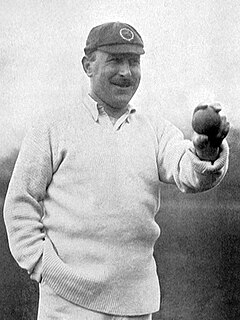
George Herbert Hirst was a professional English cricketer who played first-class cricket for Yorkshire County Cricket Club between 1891 and 1921,with a further appearance in 1929. One of the best all-rounders of his time,Hirst was a left arm medium-fast bowler and right-handed batsman. He played in 24 Test matches for England between 1897 and 1909,touring Australia twice. He completed the double of 1,000 runs and 100 wickets in an English cricket season 14 times,the second most of any cricketer after his contemporary and team-mate Wilfred Rhodes. One of the Wisden Cricketers of the Year for 1901,Hirst scored 36,356 runs and took 2,742 wickets in first-class cricket. In Tests,he made 790 runs and captured 59 wickets.
In the 1970 English cricket season,a scheduled South African tour was cancelled for political reasons. As this meant there would be no international cricket in England that season,a Rest of the World team was assembled to play a series of five-day matches against England. At the time,they were played as Test matches,but that status was later revoked by the International Cricket Conference (ICC) and they are now termed unofficial Tests,though still officially first-class matches.

Roy Kilner was an English professional cricketer who played nine Test matches for England between 1924 and 1926. An all-rounder,he played for Yorkshire County Cricket Club between 1911 and 1927. In all first-class matches,he scored 14,707 runs at an average of 30.01 and took 1,003 wickets at an average of 18.45. Kilner scored 1,000 runs in a season ten times and took 100 wickets in a season five times. On four occasions,he completed the double:scoring 1,000 runs and taking 100 wickets in the same season,recognised as a sign of a quality all-rounder.

Ryan Jay Sidebottom is a former England international cricketer who played domestic cricket for Yorkshire and Nottinghamshire and retired in 2017 after taking more than 1,000 career wickets. He is the only player in the last 15 years to win 5 county championships and also won the 2010 ICC World Twenty20 with England.

John "Jack" Crossland was an English professional cricketer who played first-class cricket between 1878 and 1887. Crossland was recognised as one of the fastest bowlers in county cricket,but critics generally believed that he threw,rather than bowled the ball,a practice illegal in cricket. Contemporaries suggest that,but for the suspicions over his bowling action,Crossland would have played Test cricket for England.
Queen's Park is a county cricket ground located in Chesterfield,Derbyshire,England and lies within a park in the centre of the town established for Queen Victoria's golden jubilee in 1887. It has a small pavilion and is surrounded by mature trees.

Keith Miller was a member of Donald Bradman's famous Australian cricket team,which toured England in 1948 and went undefeated in its 34 matches. This unprecedented feat by a Test side touring England earned the Australians the sobriquet "The Invincibles". Miller was an all-rounder:a right-arm opening fast bowler and a right-handed middle-order batsman. With Ray Lindwall,he formed Australia's first-choice opening attack,a combination regarded as one of the best of all time. Miller was also a skillful slip fielder,regarded by his captain as the best in the world.
Geoffrey Harold Hall was an English cricketer. He was born in Colne,Lancashire. During his career,he played for Somerset County Cricket Club,and made a total of 48 first-class appearances for the county.
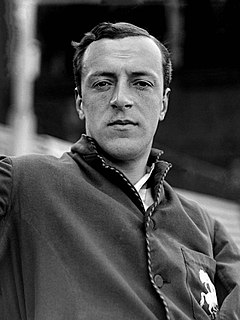
Bernard James Tindal Bosanquet was an English cricketer best known for inventing the googly,a delivery designed to deceive the batsman. When bowled,it appears to be a leg break,but after pitching the ball turns in the opposite direction to that which is expected,behaving as an off break instead. Bosanquet,who played first-class cricket for Middlesex between 1898 and 1919,appeared in seven Test matches for England as an all-rounder. He was chosen as a Wisden Cricketer of the Year in 1905.













